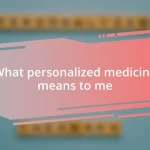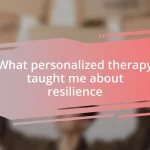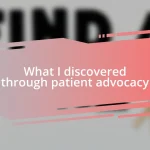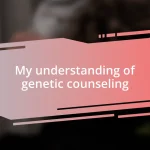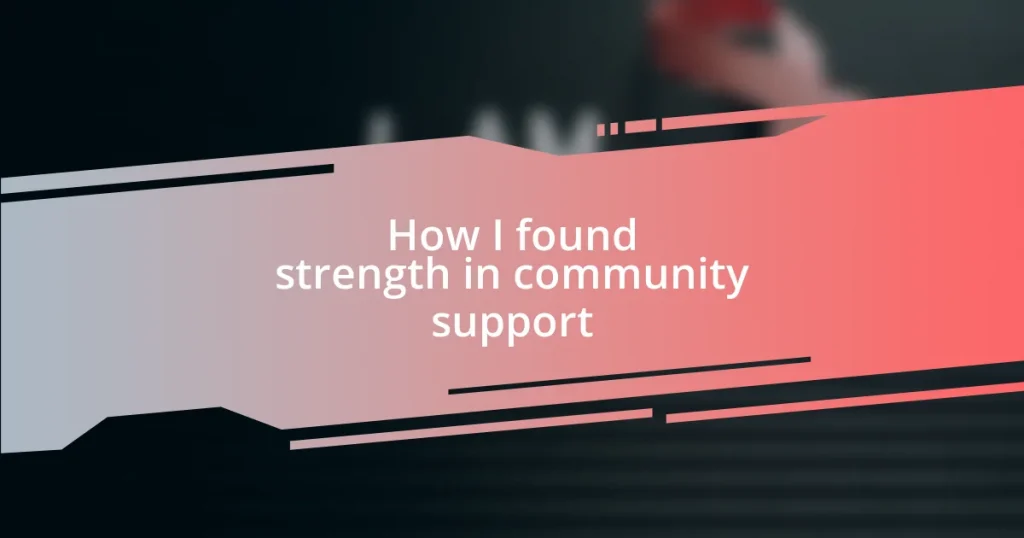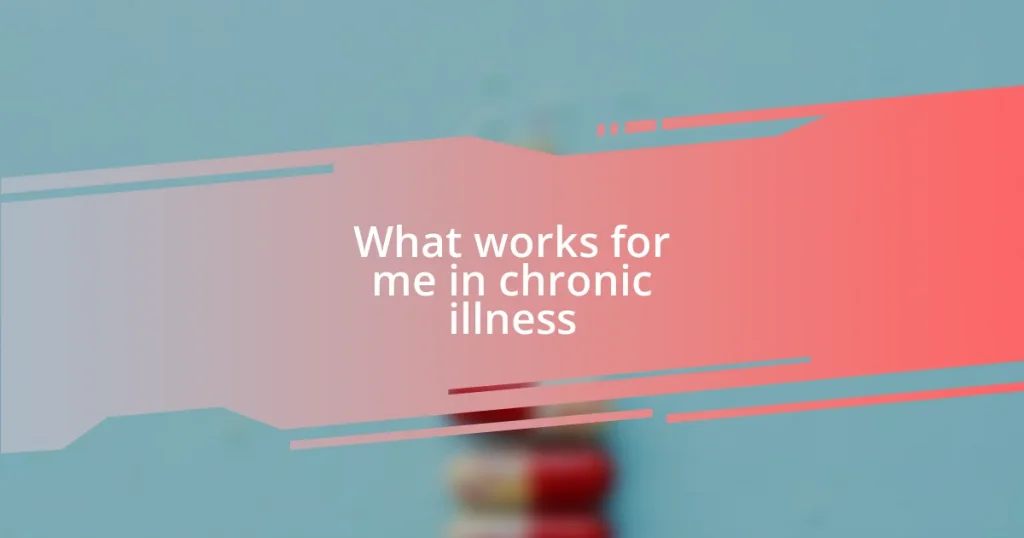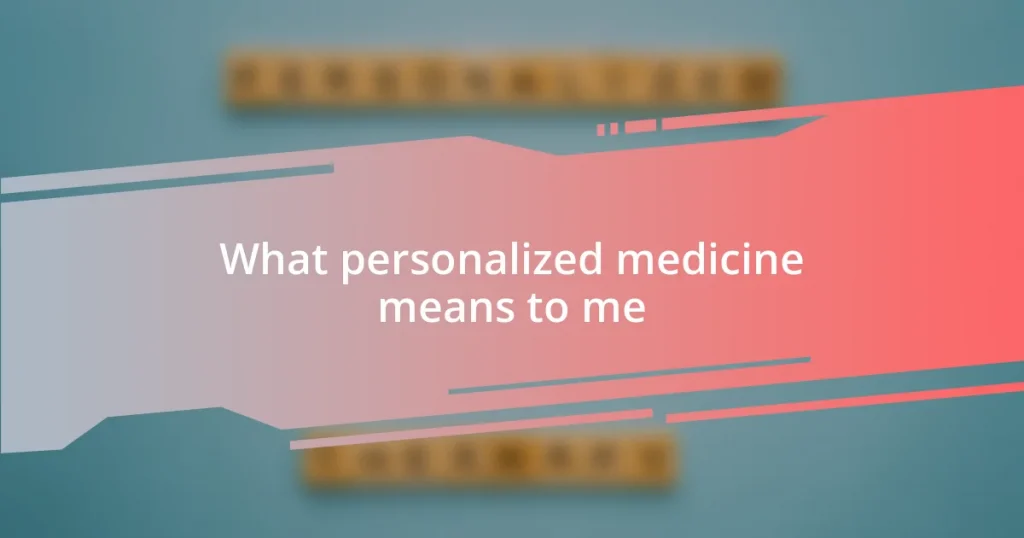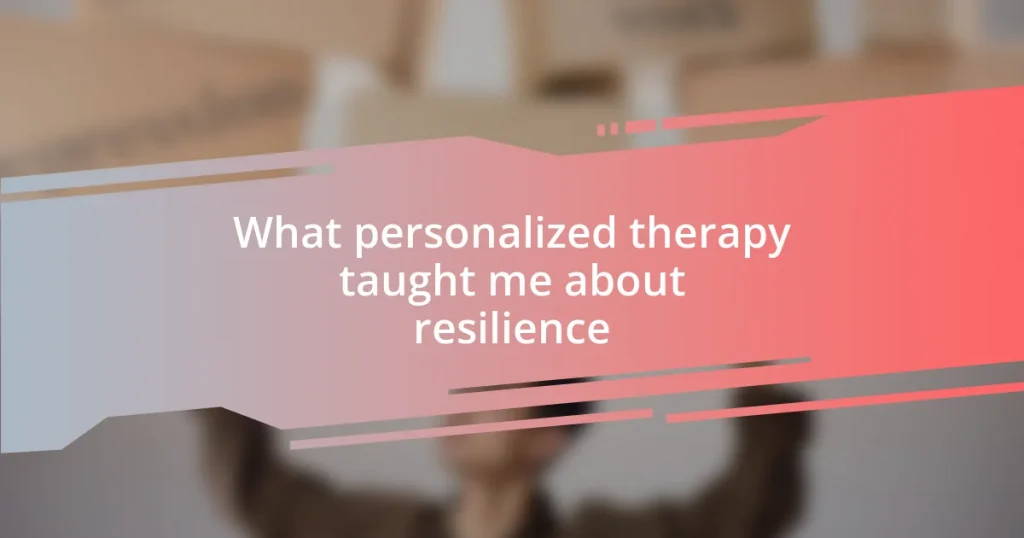Key takeaways:
- Community support fosters connection and empathy, offering tangible help and shared experiences that encourage resilience.
- Finding the right support group involves exploring various options to discover environments that promote positivity and authentic connections.
- Engaging in community activities and sharing personal stories cultivates deeper relationships and collective growth, transforming struggles into shared resilience.
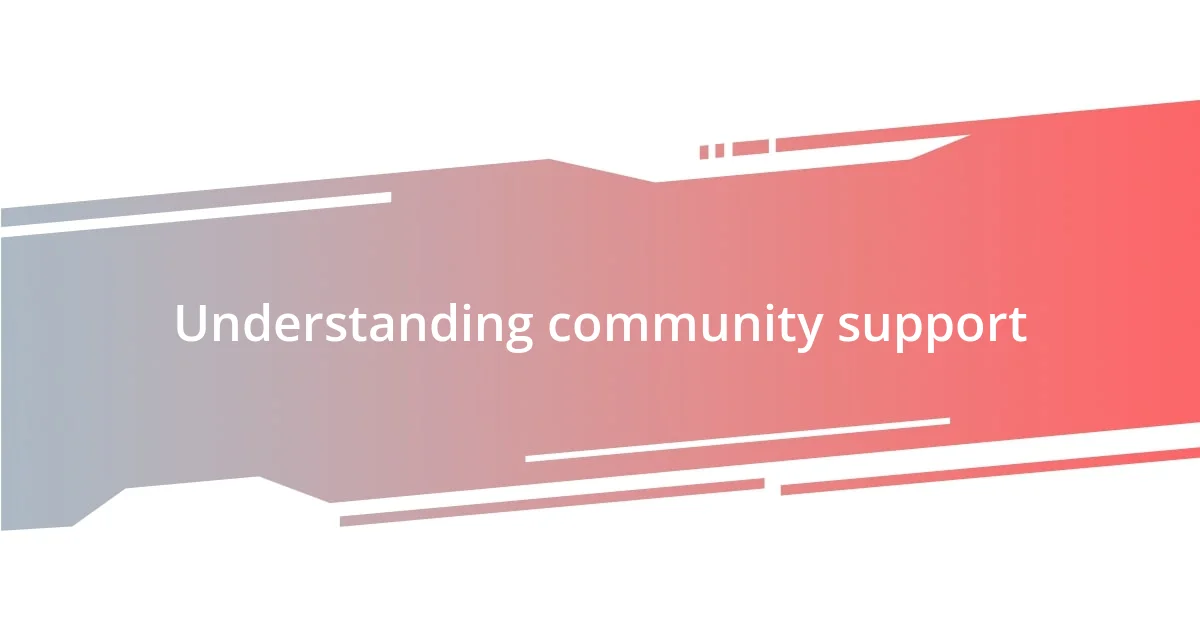
Understanding community support
Community support is often like a safety net, catching us when we fall and lifting us when we’re struggling. I remember a time when I faced a challenge that felt insurmountable; it was my friends in the community who rallied around me, offering not just words of encouragement but tangible help. Isn’t it incredible how sometimes just knowing someone is there can shift our perspective entirely?
The power of community support lies in its ability to foster connection and understanding. When we share our struggles, we find threads of commonality that weave us together. I vividly recall a group session I attended, where hearing others’ stories made me feel less isolated in my difficulties. Have you ever experienced that moment when someone else’s vulnerability mirrors your own?
Additionally, community support offers both empathy and shared wisdom. I’ve learned that the collective experiences of others can light the way through our darkest hours. After sharing my own battles, others would often offer insights I hadn’t considered, showing me that I wasn’t alone. It’s fascinating how a supportive environment can spark resilience within us, don’t you think?
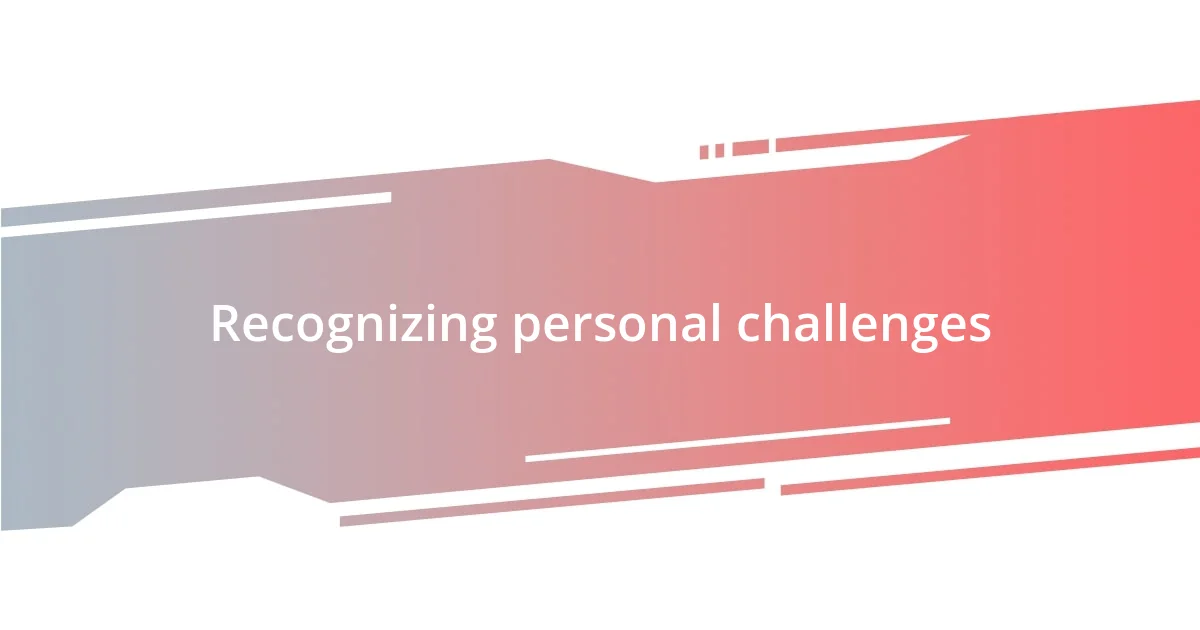
Recognizing personal challenges
Recognizing personal challenges can sometimes feel like staring at a mountain that seems impossible to climb. When I first acknowledged my own struggles, I felt a weight lifted—like I was finally being honest with myself. This recognition isn’t just about naming our challenges; it’s about understanding how they influence our lives.
- Admitting when I felt overwhelmed by work responsibilities.
- Realizing I had a tendency to isolate myself during tough times.
- Noticing how my anxiety made it hard to connect with others.
That moment of clarity opened my eyes to the importance of reaching out. It was like turning on a light in a dark room. I vividly remember days when I’d hesitate to share my feelings, thinking others might dismiss them. But when I finally did, the relief I felt was immense, and I found comfort in the knowledge that my experiences resonated with others. The journey of recognizing our challenges is not only a personal endeavor but also a shared experience that paves the way for connection and support.
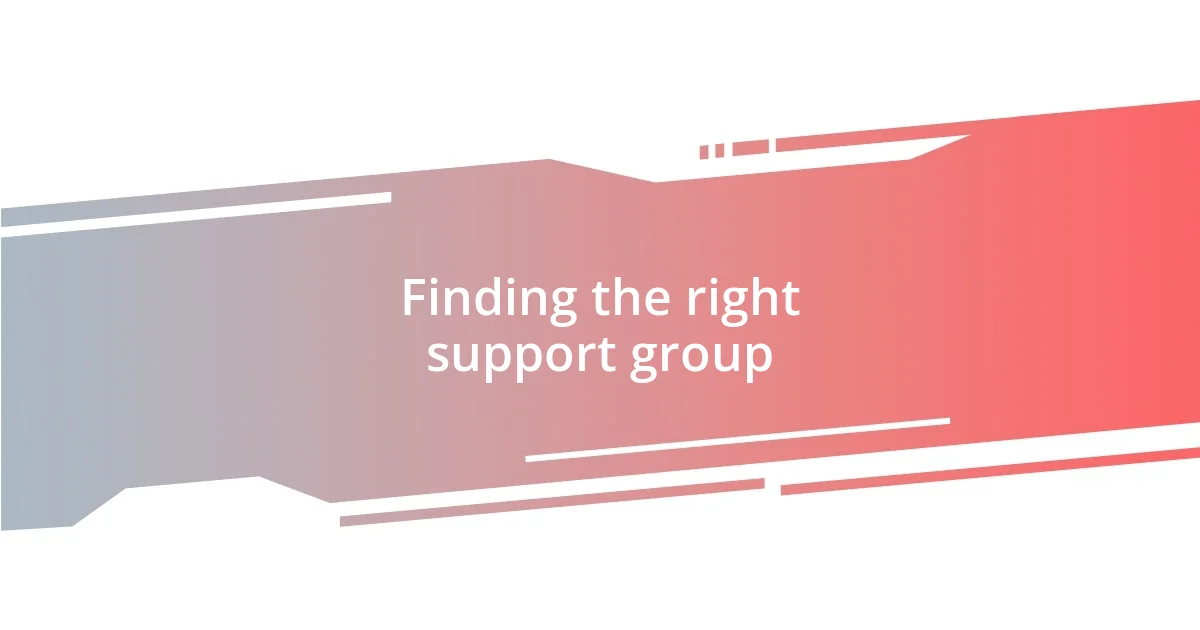
Finding the right support group
Finding the right support group can sometimes feel like dating; you have to kiss a few frogs before finding your prince. I remember my first experience trying to find a community that resonated with my own struggles. I joined a few groups online, only to realize that the atmosphere was either too serious or lacking emotional depth. It took some time, but eventually, I found a space where I felt genuinely heard and understood.
It’s essential to explore different options until you find the perfect fit. I once attended a workshop in my local community center, and while I was initially apprehensive, it turned out to be a pivotal moment for me. The participants were warm and welcoming, and sharing my story felt almost liberating. What I learned that day is that not all support groups align with our needs, so being open to trying various formats or themes can really help in finding what resonates best.
When searching for support groups, consider both the group dynamics and the experiences shared within. Reflecting on environments that foster positivity and encouragement is crucial. I remember being in a group where, after sharing our challenges, we always ended with a round of gratitude or inspiration. That shift in focus transformed our meetings into more uplifting experiences, reinforcing the power of support. So, don’t hesitate to seek environments that create genuine connections and inspire growth.
| Criteria | Considerations |
|---|---|
| Group Dynamics | Look for a culture that encourages open expression and empathy. |
| Variety of Formats | Try different types of groups (in-person, online, workshops) until you find what suits you. |
| Shared Experiences | Choose groups that resonate with your struggles for authentic connection. |
| Focus on Positivity | Seek environments that end meetings on uplifting notes to inspire motivation. |
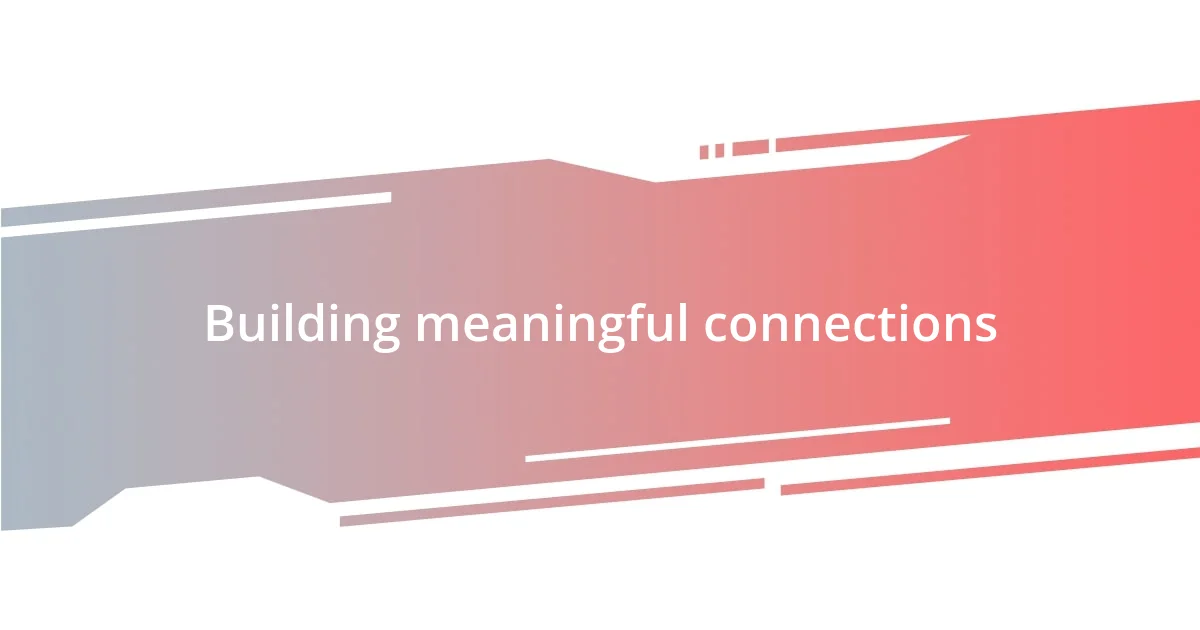
Building meaningful connections
Building meaningful connections often begins with vulnerability. I remember the first time I shared a personal story at a gathering. My voice quivered, my heart raced, but when I finished, a wave of understanding washed over the room. It was the realization that others were nodding along, their eyes reflecting similar experiences. Have you ever felt that golden moment when you notice you’re not alone? That feeling solidified my belief in the power of shared vulnerability.
In my journey, I found that connection flourishes when we embrace authenticity. There was a time when I tried to mask my struggles, fearing judgment. However, I soon discovered that my openness encouraged others to share their stories, too. Each shared moment brought us closer together, transforming strangers into a supportive community. Isn’t it fascinating how honesty can ignite genuine relationships? It’s this authenticity that builds bridges, allowing us to lean on one another during tough times.
Additionally, nurturing these connections requires consistent effort. I’ve learned that reaching out, even in small ways, can strengthen bonds. A simple text checking in on someone or making plans to grab coffee can show you care and keep the connection alive. I often reflect on how those small gestures ripple outward, creating a network of support. If you’ve ever experienced the warmth of a friend’s message when you needed it most, you know exactly what I mean. Each connection we build can ignite a sense of belonging that makes life richer.
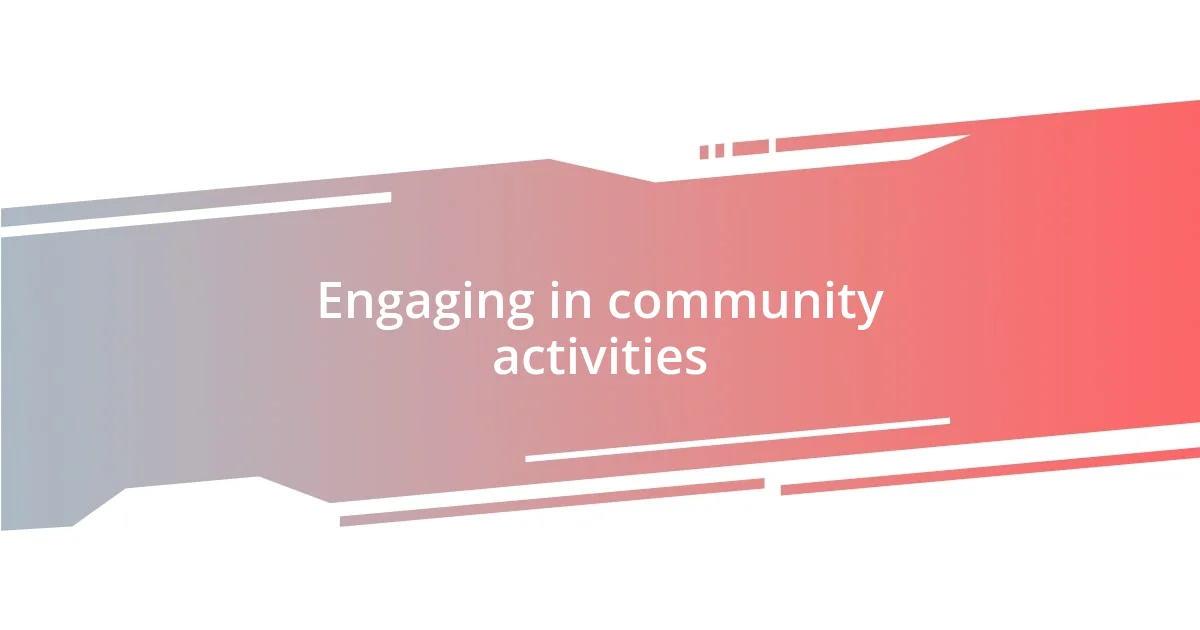
Engaging in community activities
Engaging in community activities is a gateway to deeper connections. I remember volunteering at a local shelter, feeling a mix of excitement and trepidation. That first day, as I helped serve meals, I connected with individuals whose stories were far beyond my own struggles. It became so clear to me—service not only aids those in need but creates bonds among volunteers too. Have you ever noticed how shared purpose cultivates camaraderie?
I found that participation in community events, like local fairs or clean-up days, also played a crucial role in my journey. One particular event stands out; it involved cleaning up a neighborhood park. We laughed, shared snacks, and exchanged stories while working side by side. By the end of the day, we weren’t just acquaintances; we had forged a supportive network based on a common goal. I often think about how a simple act of giving back can foster relationships that uplift us all. What if everyone realized the power of such shared experiences in building a community?
Moreover, joining local clubs and activities has enriched my life immensely. I once took a pottery class, and I’ll never forget the first time my piece came out of the kiln. There was a collective gasp of admiration from my classmates that filled me with pride—this sense of achievement was amplified by the encouragement of others. Here, I discovered how collaborating on creative projects not only nurtured my artistic side but also deepened connections with fellow makers. Isn’t it amazing how engaging in creative outlets brings people together while allowing us to express our individuality?
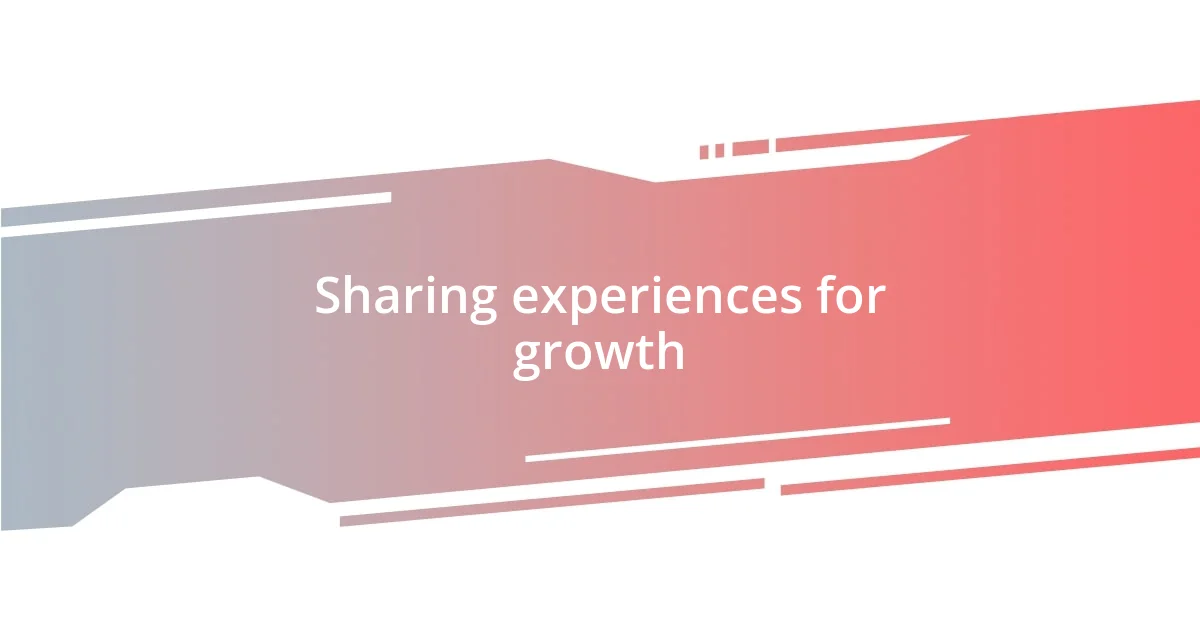
Sharing experiences for growth
Sharing experiences becomes a catalyst for growth when we recognize that each story has the potential to inspire change. I often think back to a support group I attended. One participant shared how a major setback turned into a stepping stone for personal development. Listening to her, I felt a surge of hope—could my own difficulties lead to growth, too? This moment taught me that our collective narratives create a tapestry of resilience, urging us to rise together.
There’s something transformative about exchanging stories with others. During a casual gathering, I found myself sitting beside a stranger who recounted her journey through grief. As she spoke, tears filled my eyes; in her story, I perceived echoes of my own pain. That shared moment wasn’t just cathartic—it was a reminder that vulnerability fosters understanding. Haven’t you experienced that feeling when someone else’s story resonates so deeply it makes you rethink your own? In those spaces, growth isn’t just an individual journey; it’s a communal process.
I’ve also realized the power of storytelling in unexpected places. One day, I joined a casual book club, thinking it would be about the latest bestseller. Instead, participants began revealing their reasons for choosing certain books, weaving them into their life experiences. The environment became a sanctuary of shared wisdom. Have you ever discovered a new perspective by listening to someone’s take on a familiar topic? This exchange opened my eyes to how our life experiences, when shared, not only enlighten but also unite us. It was in these moments that I truly grasped the beauty of collective growth.

